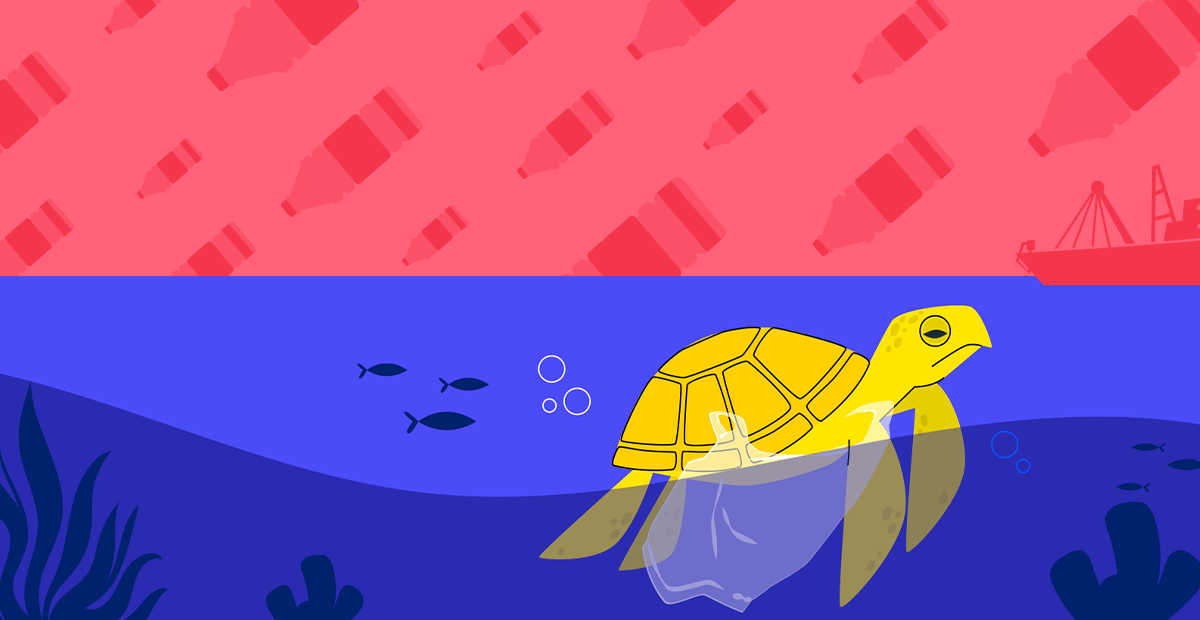Plastic Free July: Progresser Tips for Reducing Your Use

By 2050, plastic production is expected to reach nearly 14.5 billion tons—four times what was produced in 2019 and nearly three times the weight of the current world population, according to the Plastic Soup Foundation. That name doesn’t summon the prettiest of images, does it?
But the truth is, it’s not a pretty image.
With the greatest share of plastics being produced for packaging (44%), much of it single-use, reducing our consumption here can make a sizable environmental impact. Each of us can choose to play a part in making that impact. And we should…fast.
In honor of Plastic Free July, the Progress Earth Team asked our employees around the world to share their tips for reducing plastic use—and boy did they deliver. We’ve compiled these strategies, plus statistics, resources and ways to join the fight against plastic pollution into a comprehensive, interactive infographic.
What is Plastic Free July? According to the website, “Plastic Free July® is a global movement that helps millions of people be part of the solution to plastic pollution – so we can have cleaner streets, oceans, and beautiful communities.” The initiative aims to enlist global citizens to accept the challenge of refusing single-use plastics for the month of July, and beyond. Like building any habits, starting small can drive some serious long-term progress. If we consciously choose to reduce our use for just one month and see that it’s possible, why not keep it up?
Kate Pendarvis, VP of Creative and Digital Marketing and Earth Team member at Progress, has been working hard to minimize her and her family’s reliance on plastic. Last year, she embarked on a little experiment to get her family off of single-use water bottles. She recounts her story:
“My husband is a water snob. He earned that title by refusing to drink tap water and filtered water because of the smell and taste. I usually can’t smell or taste most of the same things he does in water, aside from the occasional sulfur smell or chlorine taste. He can point me to any news article that highlights contaminated drinking water to prove why he doesn’t trust our water systems. I wasn’t going to accept that buying large amounts of bottled water was our future. This was now a challenge for me—and I never back down from a challenge. I did some research and purchased three highly rated filtered water pitchers and new filters for the one I already had. Tapping into my web management skills, I conducted a blind A/B taste test. We used Brita, PUR, Waterdrop and ZeroWater for the pitchers and included tap water and bottled water in our test.
He narrowed down his favorite cups to the bottled water and ZeroWater samples. Ultimately, the bottled water was his favorite—but he did say that the ZeroWater sample was close enough that he would drink it! Success! We kept the ZeroWater pitcher (purchasing a travel version for vacations) and gave the other newly purchased water pitchers to family members, so nothing went to waste. I hope this story gives others with strong tastebuds an alternate option to bottles for good-tasting water.”

Kate’s investigation is a great example of how a little bit of effort and creativity can help you minimize your footprint—and your family’s footprint! From toting reusable shopping bags to skipping the straw at your favorite restaurant, there are a variety of fairly painless ways we as individuals can cut down on the plastic glut. For more tips to help you reduce your use this July and beyond—download our infographic.

